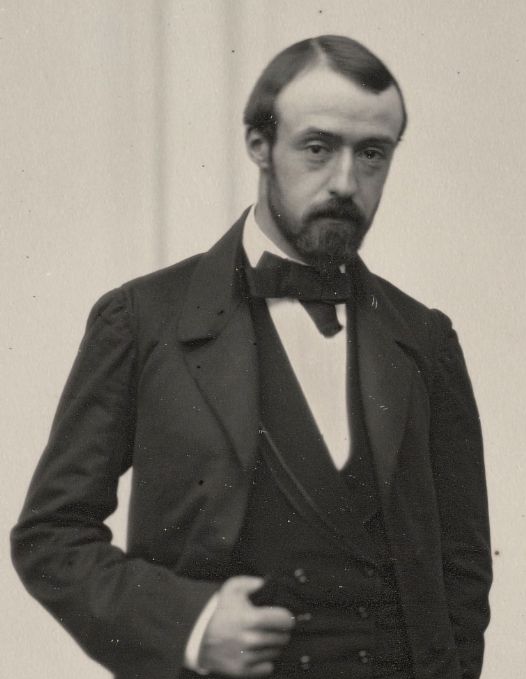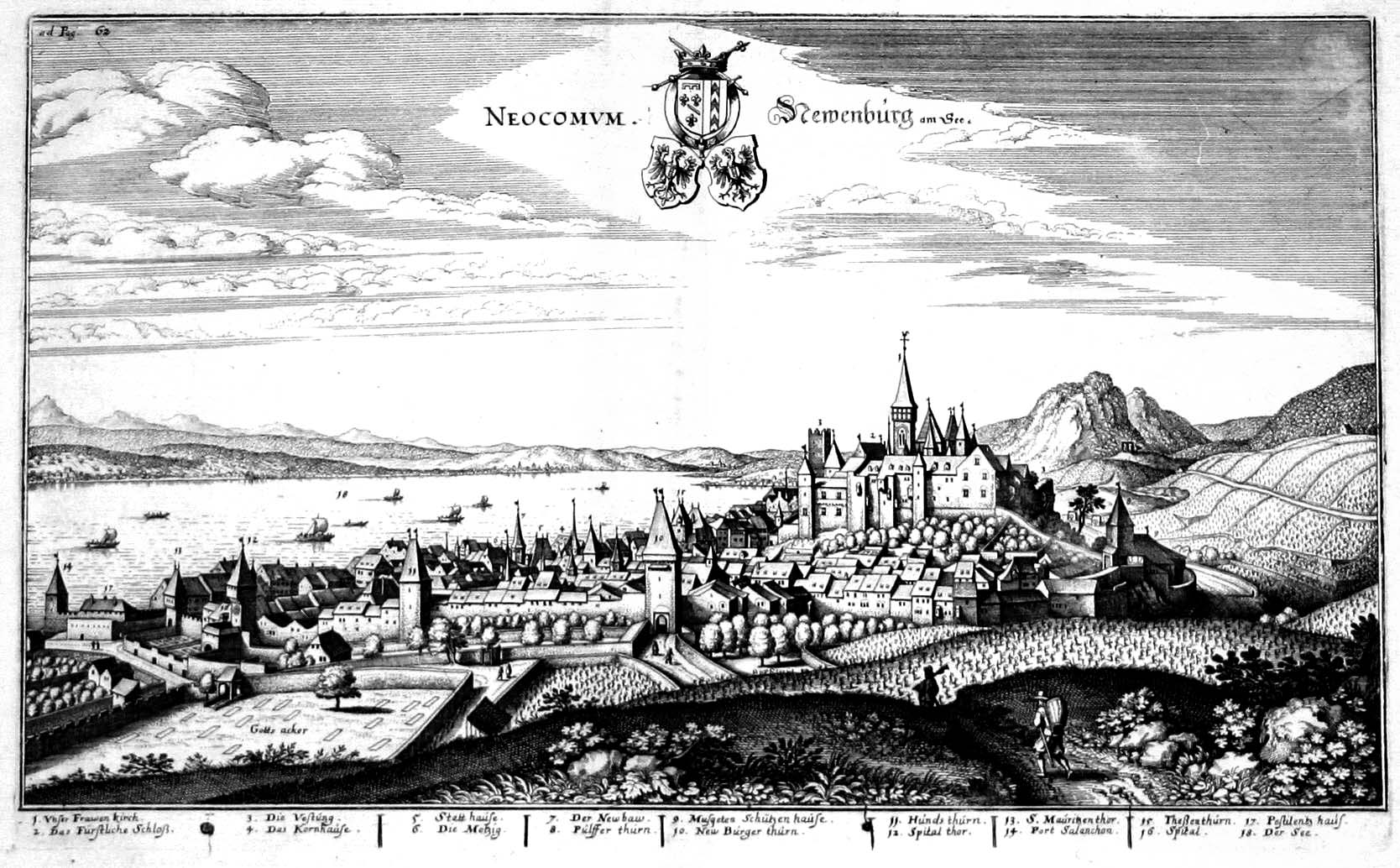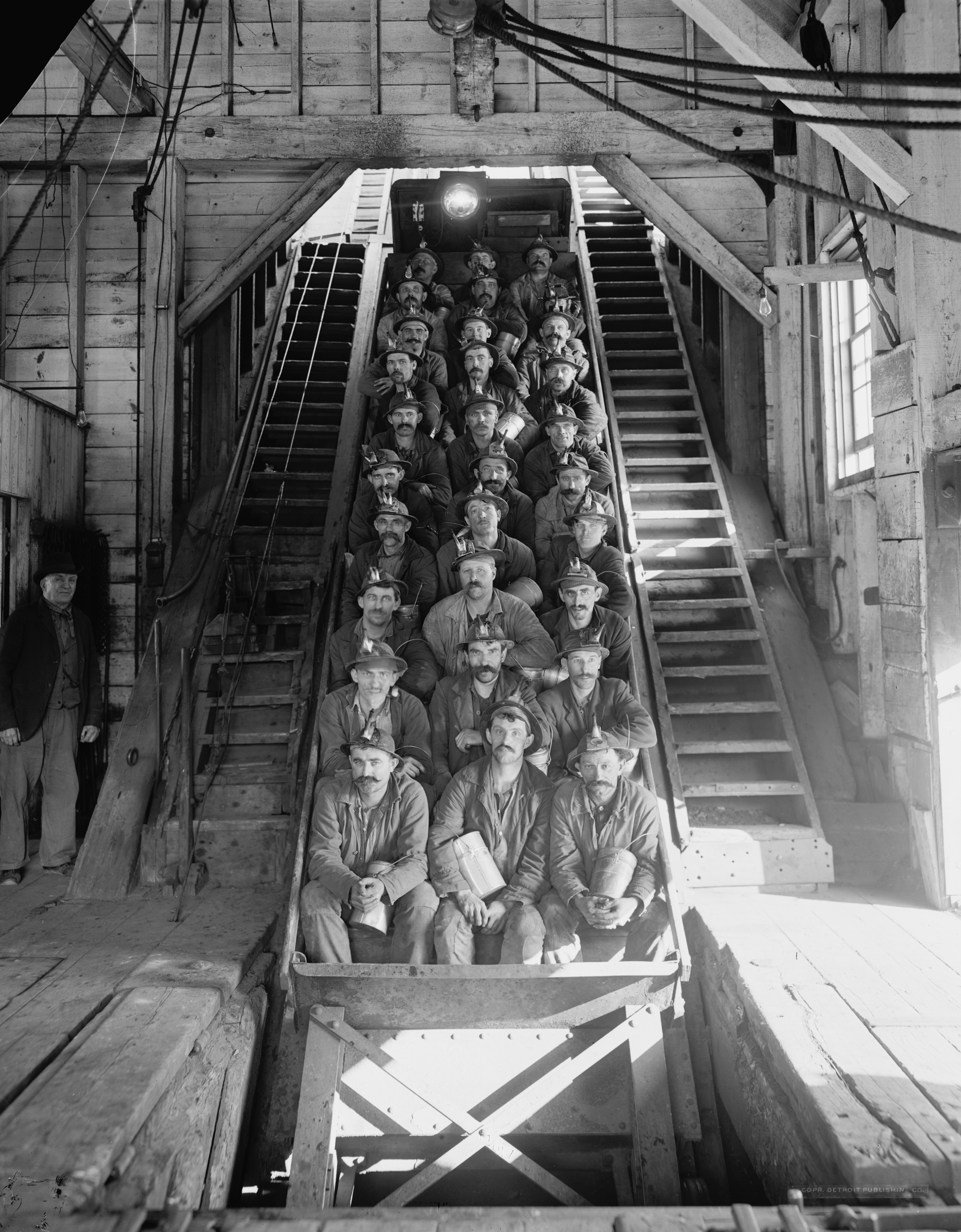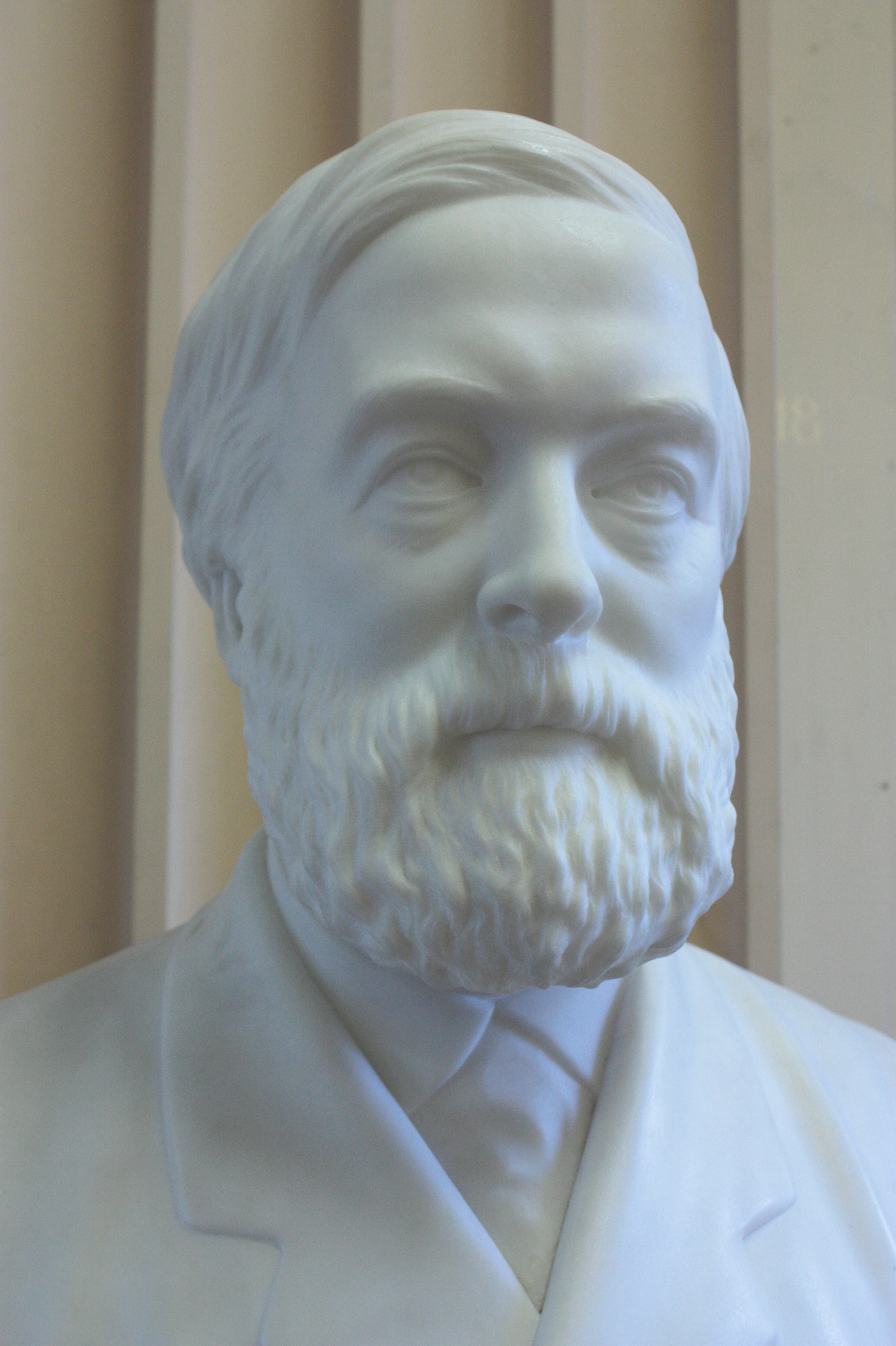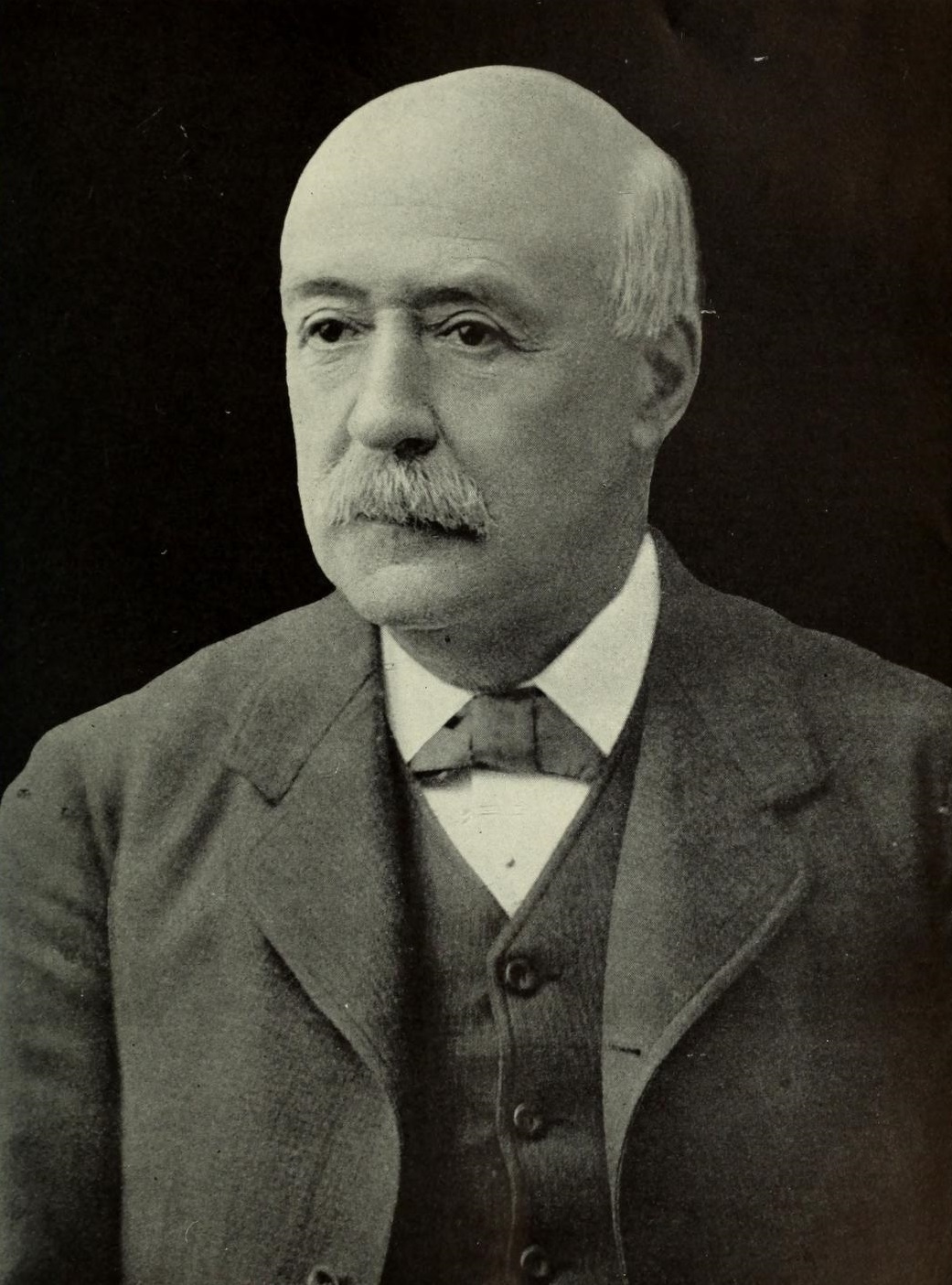|
Alexander Emanuel Agassiz
Alexander Emmanuel Rodolphe Agassiz (December 17, 1835March 27, 1910), son of Louis Agassiz and stepson of Elizabeth Cabot Agassiz, was an American scientist and engineer. Biography Agassiz was born in Neuchâtel, Switzerland and immigrated to the United States with his parents, Louis and Cecile (Braun) Agassiz, in 1846. He graduated from Harvard University in 1855, subsequently studying engineering and chemistry, and taking the degree of Bachelor of Science at the Lawrence Scientific School of the same institution in 1857; in 1859 became an assistant in the United States Coast Survey. Thenceforward he became a specialist in marine ichthyology. Agassiz was elected a Fellow of the American Academy of Arts and Sciences in 1862. Up until the summer of 1866, Agassiz worked as assistant curator in the museum of natural history that his father founded at Harvard. E. J. Hulbert, a friend of Agassiz's brother-in-law, Quincy Adams Shaw, had discovered a rich copper lode known as t ... [...More Info...] [...Related Items...] OR: [Wikipedia] [Google] [Baidu] |
Neuchâtel
Neuchâtel (, , ; german: Neuenburg) is the capital of the Swiss canton of Neuchâtel, situated on the shoreline of Lake Neuchâtel. Since the fusion in 2021 of the municipalities of Neuchâtel, Corcelles-Cormondrèche, Peseux, and Valangin, the city has approximately 45,000 inhabitants (80,000 in the metropolitan area). The city is sometimes referred to historically by the German name ; both the French and German names mean "New Castle". It was originally part of the Kingdom of Burgundy, then part of the Holy Roman Empire and later under Prussian control from 1707 until 1848, with an interruption during the Napoleonic Wars from 1802 to 1814. In 1848, Neuchâtel became a republic and a canton of Switzerland. Neuchâtel is a centre of the Swiss watch industry, the site of micro-technology and high-tech industries, and home to research centres and organizations such as the Swiss Center for Electronics and Microtechnology (CSEM), and Philip Morris International's ''Cube''. The ... [...More Info...] [...Related Items...] OR: [Wikipedia] [Google] [Baidu] |
Calumet And Hecla Mining Company
The Calumet and Hecla Mining Company was a major copper-mining company based within Michigan's Copper Country. In the 19th century, the company paid out more than $72 million in shareholder dividends, more than any other mining company in the United States during that period. History In 1864, Edwin J. Hulbert discovered a copper-bearing section of what became known as the Calumet Conglomerate of Precambrian age. The find was in Houghton County, Michigan, between the rich Cliff mine to the northeast, and the copper mines of Portage Lake to the southwest, but a long way from either. Hulbert formed the Hulbert Mining Company in 1864 to acquire the land rights, before creating the Calumet Company in 1865, with Boston investors. The company spun off the Hecla Company the following year, and assigned shares in the new company to Calumet shareholders. Hulbert was a major shareholder in both companies, and was in charge of mine operations. But despite the rich ore, Hulbert did not h ... [...More Info...] [...Related Items...] OR: [Wikipedia] [Google] [Baidu] |
Challenger Expedition
The ''Challenger'' expedition of 1872–1876 was a scientific program that made many discoveries to lay the foundation of oceanography. The expedition was named after the naval vessel that undertook the trip, . The expedition, initiated by William Benjamin Carpenter, was placed under the scientific supervision of Sir Charles Wyville Thomson—of the University of Edinburgh and Merchiston Castle School—assisted by five other scientists, including Sir John Murray, a secretary-artist and a photographer. The Royal Society of London obtained the use of ''Challenger'' from the Royal Navy and in 1872 modified the ship for scientific tasks, equipping it with separate laboratories for natural history and chemistry. The expedition, led by Captain George Nares, sailed from Portsmouth, England, on 21 December 1872. Other naval officers included Commander John Maclear. – pages 19 and 20 list the civilian staff and naval officers and crew, along with changes that took place duri ... [...More Info...] [...Related Items...] OR: [Wikipedia] [Google] [Baidu] |
Charles Wyville Thomson
Sir Charles Wyville Thomson (5 March 1830 – 10 March 1882) was a Scottish natural historian and marine zoologist. He served as the chief scientist on the Challenger expedition; his work there revolutionized oceanography and led to his knighthood. Life Thomson was born at Bonsyde, in Linlithgow, West Lothian, on 5 March 1830, the son of Andrew Thomson, a surgeon in the service of the East India Company, and his wife Sarah Ann Drummond Smith. He was baptised Wyville Thomas Charles Thomson, and changed his name in 1876. He was educated under Charles Chalmers at Merchiston Castle School, then from 1845 studied medicine at the University of Edinburgh graduating with an MD. However, his focus turned from medicine to natural science, and he joined the Botanical Society of Edinburgh in 1847, and soon after became secretary to the Royal Physical Society of Edinburgh. In 1850 he was attending the botany class of John Hutton Balfour at the University. In 1850 he was appointed lectu ... [...More Info...] [...Related Items...] OR: [Wikipedia] [Google] [Baidu] |
Elizabeth Hodges Clark
Elizabeth Hodges Clark (May 15, 1855 – 1932) was an American museum assistant, secretary and scientific illustrator employed by the Harvard's Museum of Comparative Zoology (MCZ) from 1873 to at least 1910. As an assistant, Clark categorized marine specimens and, later, accepted a promotion to become the personal secretary to museum director (and son of the founding director Louis) Alexander Agassiz, a job which left Clark in charge of the day-to-day management of the MCZ when the younger Agassiz was afield.Museum of Comparative Zoology Harvard University Annual Report 2017-2018 - https://mcz.harvard.edu/files/mcz/files/mcz_ar_2017-2018_final_web.pdf Learning on the job Miss Clark's career began when, at age eighteen and without any previous scientific credentials, she was offered and accepted a job at the MCZ sorting marine specimens under the supervision of naturalist Theodore Lyman Theodore Lyman may refer to: * Theodore B. Lyman (1815–1893), American bishop * Theodore Lym ... [...More Info...] [...Related Items...] OR: [Wikipedia] [Google] [Baidu] |
Museum Of Comparative Zoology
A museum ( ; plural museums or, rarely, musea) is a building or institution that cares for and displays a collection of artifacts and other objects of artistic, cultural, historical, or scientific importance. Many public museums make these items available for public viewing through exhibits that may be permanent or temporary. The largest museums are located in major cities throughout the world, while thousands of local museums exist in smaller cities, towns, and rural areas. Museums have varying aims, ranging from the conservation and documentation of their collection, serving researchers and specialists, to catering to the general public. The goal of serving researchers is not only scientific, but intended to serve the general public. There are many types of museums, including art museums, natural history museums, science museums, war museums, and children's museums. According to the International Council of Museums (ICOM), there are more than 55,000 museums in 20 ... [...More Info...] [...Related Items...] OR: [Wikipedia] [Google] [Baidu] |
Lake Titicaca
Lake Titicaca (; es, Lago Titicaca ; qu, Titiqaqa Qucha) is a large freshwater lake in the Andes mountains on the border of Bolivia and Peru. It is often called the highest navigable lake in the world. By volume of water and by surface area, it is also the largest lake in South America.Grove, M. J., P. A. Baker, S. L. Cross, C. A. Rigsby and G. O. Seltzer 2003 Application of Strontium Isotopes to Understanding the Hydrology and Paleohydrology of the Altiplano, Bolivia-Peru. ''Palaeogeography, Palaeoclimatology, Palaeoecology'' 194:281-297. Lake Titicaca has a surface elevation of . The "highest lake" claim is generally considered to refer to commercial craft. Numerous smaller bodies of water (that are not considered lakes) around the world are at higher elevations. For many years, the largest vessel afloat on the lake was the 2,200-ton (2,425 U.S. tons), SS ''Ollanta''. Today, the largest vessel is most likely the similarly sized train barge/float '' Manco Capac'', operate ... [...More Info...] [...Related Items...] OR: [Wikipedia] [Google] [Baidu] |
Chile
Chile, officially the Republic of Chile, is a country in the western part of South America. It is the southernmost country in the world, and the closest to Antarctica, occupying a long and narrow strip of land between the Andes to the east and the Pacific Ocean to the west. Chile covers an area of , with a population of 17.5 million as of 2017. It shares land borders with Peru to the north, Bolivia to the north-east, Argentina to the east, and the Drake Passage in the far south. Chile also controls the Pacific islands of Juan Fernández, Isla Salas y Gómez, Desventuradas, and Easter Island in Oceania. It also claims about of Antarctica under the Chilean Antarctic Territory. The country's capital and largest city is Santiago, and its national language is Spanish. Spain conquered and colonized the region in the mid-16th century, replacing Inca rule, but failing to conquer the independent Mapuche who inhabited what is now south-central Chile. In 1818, after ... [...More Info...] [...Related Items...] OR: [Wikipedia] [Google] [Baidu] |
Peru
, image_flag = Flag of Peru.svg , image_coat = Escudo nacional del Perú.svg , other_symbol = Great Seal of the State , other_symbol_type = Seal (emblem), National seal , national_motto = "Firm and Happy for the Union" , national_anthem = "National Anthem of Peru" , march = "March of Flags" , image_map = PER orthographic.svg , map_caption = , image_map2 = , capital = Lima , coordinates = , largest_city = capital , official_languages = Peruvian Spanish, Spanish , languages_type = Co-official languages , languages = , ethnic_groups = , ethnic_groups_year = 2017 , demonym = Peruvians, Peruvian , government_type = Unitary state, Unitary Semi-presidential system, semi-presidential republic , leader_title1 = President of Peru, President ... [...More Info...] [...Related Items...] OR: [Wikipedia] [Google] [Baidu] |
Newport, Rhode Island
Newport is an American seaside city on Aquidneck Island in Newport County, Rhode Island. It is located in Narragansett Bay, approximately southeast of Providence, south of Fall River, Massachusetts, south of Boston, and northeast of New York City. It is known as a New England summer resort and is famous for its historic mansions and its rich sailing history. It was the location of the first U.S. Open tournaments in both tennis and golf, as well as every challenge to the America's Cup between 1930 and 1983. It is also the home of Salve Regina University and Naval Station Newport, which houses the United States Naval War College, the Naval Undersea Warfare Center, and an important Navy training center. It was a major 18th-century port city and boasts many buildings from the Colonial era. The city is the county seat of Newport County, which has no governmental functions other than court administrative and sheriff corrections boundaries. It was known for being the lo ... [...More Info...] [...Related Items...] OR: [Wikipedia] [Google] [Baidu] |
Castle Hill Inn & Resort
A castle is a type of fortified structure built during the Middle Ages predominantly by the nobility or royalty and by military orders. Scholars debate the scope of the word ''castle'', but usually consider it to be the private fortified residence of a lord or noble. This is distinct from a palace, which is not fortified; from a fortress, which was not always a residence for royalty or nobility; from a ''pleasance'' which was a walled-in residence for nobility, but not adequately fortified; and from a fortified settlement, which was a public defence – though there are many similarities among these types of construction. Use of the term has varied over time and has also been applied to structures such as hill forts and 19th-20th century homes built to resemble castles. Over the approximately 900 years when genuine castles were built, they took on a great many forms with many different features, although some, such as curtain walls, arrowslits, and portcullises, were ... [...More Info...] [...Related Items...] OR: [Wikipedia] [Google] [Baidu] |
Zoology
Zoology ()The pronunciation of zoology as is usually regarded as nonstandard, though it is not uncommon. is the branch of biology that studies the animal kingdom, including the structure, embryology, evolution, classification, habits, and distribution of all animals, both living and extinct, and how they interact with their ecosystems. The term is derived from Ancient Greek , ('animal'), and , ('knowledge', 'study'). Although humans have always been interested in the natural history of the animals they saw around them, and made use of this knowledge to domesticate certain species, the formal study of zoology can be said to have originated with Aristotle. He viewed animals as living organisms, studied their structure and development, and considered their adaptations to their surroundings and the function of their parts. The Greek physician Galen studied human anatomy and was one of the greatest surgeons of the ancient world, but after the fall of the Western Roman Empire ... [...More Info...] [...Related Items...] OR: [Wikipedia] [Google] [Baidu] |
